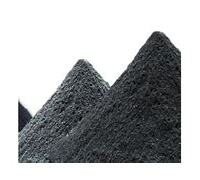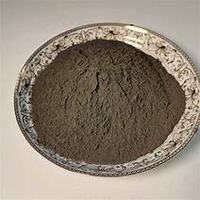1. Introduction
Titanium powder—often referred to as ti powder—is far more than just a fine metal dust. From aerospace components to biomedical implants and high-performance coatings, titanium powder plays a critical role across advanced industries. But not all titanium powders are created equal. Depending on composition, particle shape, and manufacturing method, performance can vary dramatically. In this article, we’ll break down seven key types of titanium powder, compare their properties, and explore real-world applications, pricing trends, and how they stack up against related metal powders like molybdenum and tungsten.

2. Pure Titanium Powder vs. Titanium Alloy Powder
Pure titanium powder is typically used when maximum corrosion resistance and biocompatibility are needed—think medical implants or chemical processing equipment. It’s often produced via the HDH (Hydride-Dehydride) process, resulting in irregularly shaped particles that are cost-effective but less ideal for high-precision 3D printing.
In contrast, titanium alloy powder—especially Ti6Al4V (also known as Ti64)—is the workhorse of aerospace and defense. This alpha-beta alloy offers an exceptional strength-to-weight ratio and performs well at elevated temperatures. Ti6Al4V powder is commonly gas atomized to produce spherical particles, which flow smoothly in additive manufacturing systems.
- Pure titanium powder: Best for biocompatibility and corrosion resistance.
- Ti6Al4V powder: Preferred for structural applications in 3D printing and jet engines.
3. Titanium Powder for 3D Printing: Spherical vs. Irregular
When it comes to titanium powder for 3D printing, particle morphology matters. Spherical titanium powder—usually made by gas atomization—ensures consistent powder flow, high packing density, and uniform layer deposition in laser or electron beam melting systems. This is why gas atomized titanium powder dominates the additive manufacturing market.
On the other hand, HDH titanium powder has angular, irregular particles. While cheaper, it’s rarely used in high-end 3D printing due to poor flowability and inconsistent melt behavior. However, it finds use in powder metallurgy, brazing pastes, and some lower-cost metal injection molding applications.

4. Specialty Titanium Powders: Beyond the Metal
Beyond pure and alloyed metal powders, several advanced titanium-based compounds serve niche but vital roles:
- Titanium nitride powder (TiN): Used for hard, wear-resistant coatings.
- Titanium carbide powder (TiC): Common in cutting tools and cermets.
- Titanium diboride powder (TiB2): Extremely hard and conductive; used in armor and cathodes.
- TiH2 powder: A hydrogenated form used as a foaming agent or precursor in powder metallurgy.
- TiO2 nano powder: Not a metal, but widely used in sunscreens, paints, and photocatalysts.
Note that while tio2 powder shares the ‘titanium’ name, it’s chemically distinct from titanium metal powder and not suitable for structural or 3D printing uses.
5. Titanium Powder Price Factors and Market Trends
The titanium powder price per kg varies widely—typically from $50 to over $400—depending on purity, particle size, shape, and alloy type. For example, titanium powder for 3D printing price is significantly higher than standard HDH powder due to the cost of gas atomization and stringent quality controls.

Ti6Al4V powder price often runs 20–30% above pure titanium powder because of the added alloying elements and tighter specifications. Buyers should also consider batch consistency, oxygen content, and supplier certifications when evaluating titanium powder for sale.
Global supply chain dynamics, energy costs, and demand from aerospace and medical sectors heavily influence titanium metal powder price trends. Reputable titanium powder suppliers often provide certificates of analysis to verify composition and particle distribution.
6. How Titanium Powder Compares to Molybdenum and Tungsten Powders
While titanium powder excels in lightweight, high-strength applications, molybdenum powder and tungsten powder serve different niches. Molybdenum metal powder (including tzm powder and molybdenum disulfide powder) offers high melting points and thermal stability—ideal for furnace parts and lubricants. Mos2 powder is especially valued as a dry lubricant in extreme conditions.
Tungsten powder, with its ultra-high density and melting point, is used in radiation shielding, filaments, and wear-resistant parts. Spherical tungsten powder and tungsten carbide powder are common in thermal spray and cutting tools. Unlike titanium, tungsten powder is not typically used in 3D printing due to its extreme processing temperatures.
In short: titanium for lightness and strength, molybdenum for heat resistance, tungsten for density and hardness.
7. Safety, Handling, and Common Misconceptions
Titanium dust can be flammable—especially fine or nano-sized particles—so proper handling in inert atmospheres is crucial. Contrary to myths, titanium powder is not water-reactive like alkali metals, but it can ignite in air if finely divided and exposed to sparks or high heat (hence the existence of titanium flash powder in pyrotechnics).
Also, don’t confuse titanium metal powder with burnt titanium powder coat (a surface finish) or titanium coated diamond powder (used in polishing). And while tio2 powder appears in food and cosmetics, it’s unrelated to structural titanium powders used in engineering.
8. Conclusion
Whether you’re sourcing titanium powder for additive manufacturing, exploring ti64 powder for aerospace components, or comparing titanium diboride price for advanced ceramics, understanding the nuances between powder types is essential. From gas atomized spherical powders to HDH-derived irregular particles, each variant serves a purpose shaped by cost, performance, and application. As 3D printing and green tech drive demand, the titanium powder market will continue evolving—making informed choices more important than ever for engineers and procurement professionals alike.
Our Website founded on October 17, 2012, is a high-tech enterprise committed to the research and development, production, processing, sales and technical services of ceramic relative materials such as 7. Our products includes but not limited to Boron Carbide Ceramic Products, Boron Nitride Ceramic Products, Silicon Carbide Ceramic Products, Silicon Nitride Ceramic Products, Zirconium Dioxide Ceramic Products, etc. If you are interested, please feel free to contact us.
